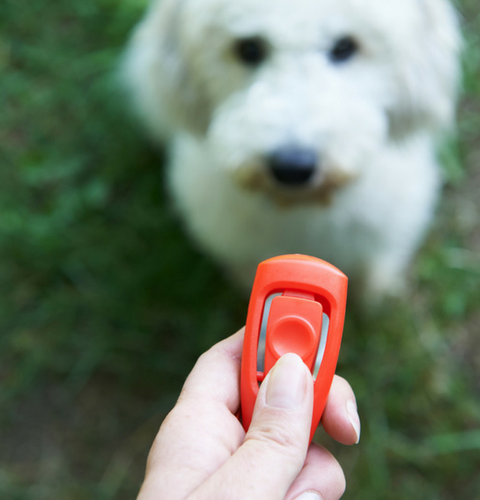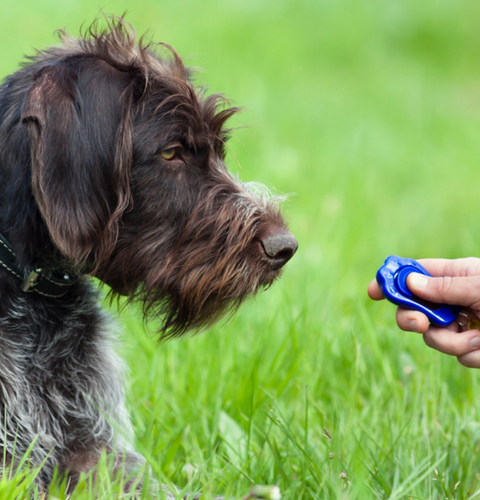Clicker Training
I believe in a positive approach to training based on the simple principle that behaviors which are rewarded will increase in frequency, particularly if reinforced in a variable manner. Behaviors that result in negative consequences may stop these behaviors at that moment but will not prevent the dog from engaging in them overtime. Outside of rewarding positive behaviors, how do you communicate to your dog the behaviors you desire from him. The most effective way is “marking” the behavior as soon as it occurs followed by a reward such as a treat. You can mark the behavior using a word like “yes” or “good” or using a sound such as the click of a clicker. There are benefits to using a sound. Your timing in marking positive behaviors can be more precise and the more precise you are, the better your dog will understand the behavior that you want him to repeat. Also, dogs’ brains process sounds quicker than words. This is why I use a clicker.
Clicking and rewarding positive behaviors is quick, effective and fun for both you and your dog. Once your dog understands that each time he hears the click he gets a reward, he will repeat the behavior. He learns that he can control when he gets a reward by repeating the same desired behavior. This is important. He can now problem solve and make choices. He also has a way of demonstrating to you his intelligence and capacity to learn new behaviors. Eventually you will add cues (commands) for specific behaviors. The split second the behavior begins to occur, give the cue, the behavior will occur, and then click and treat.Your dog now develops the ability to perform desired behaviors on command.
 |  |
Common Cues
Some of the common cues that your dog will be learning include:
- Watch
- A release cue
- Sit
- Stand
- Down
- Auto sits
- Sit/Stay
- Down/Stay
- Wait
- Stay
- Leave it
- Let’s walk
- Ability to walk on a loose leash without pulling or crossing in front of you
- Come around (assume the heel position)
- Heel (to walk at your side at your pace)
- Come
For each cue, duration, distance and distractions will gradually be introduced.

